Fujifilm Fujinon XF 60 mm f/2.4 R Macro
3. Build quality
The first of our charts compares the tested lens to its mirrorless rivals. The Fujinon gives us really a lot: the fastest aperture, the biggest number of diaphragm blades. What’s more, as it is completely made of metal outside, it is also physically the lightest and noticeably smaller than the Samsung. Unfortunately when we pass to its macro properties the problems start arising– its minimum focus is noticeably worse than that of the competitors.
You can also check how the Fujinon compares to 60 mm macro lenses for reflex cameras – the next chart shows such a comparison. It becomes clear that the Fujinon is the simplest optical construction of all. Additionally it is also the smallest and physically the lightest. You must remember, though, that it is a very tight group when it comes to the parameters. The Tamron is the fastest, the Nikkor is designed for full frame, only the Canon and the Nikkor have ultrasonic AF motors and the Fujinon lacks 1:1 magnification factor. As you see it would be difficult to draw any binding conclusions.
Please Support UsIf you enjoy our reviews and articles, and you want us to continue our work please, support our website by donating through PayPal. The funds are going to be used for paying our editorial team, renting servers, and equipping our testing studio; only that way we will be able to continue providing you interesting content for free. |
- - - - - - - - - - - - - - - - - - - - - - - - - - - - - - - - - - - - - - - - - - - - - - - -
The photo below shows how the Fujinon XF 60 mm f/2.4 R Macro presents itself when compared to other „primes” from the same system.
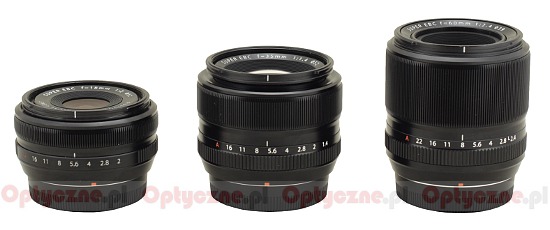 |
The Fujinon XF 60 mm f/2.4 R Macro starts with a metal mount and contacts; the mount surrounds a rear element. The rear element is less than 2 cm in diameter and hidden inside the casing over 1 cm deep. The inner tube around it is black and nicely matted. When you pass to the minimum focus distance, the front element system extends on a metal, telescopic tube, making the lens about 2 cm longer. What’s interesting, the rear element remains immobile all the time. It means that, when you pass to the minimum focus distance, not only the optical system of the lens changes but also its focal length and aperture.
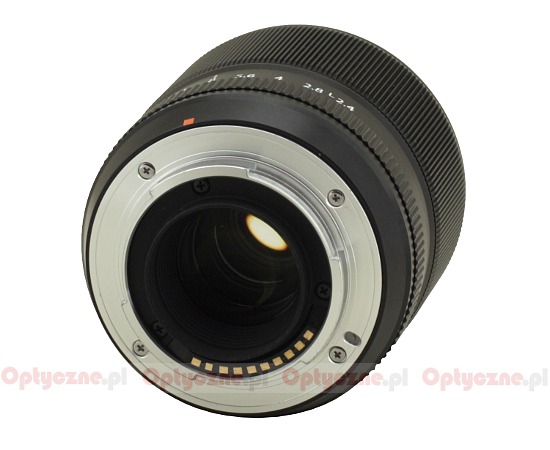 |
The proper body starts with a smooth and immobile ring on which there is a red marking, helping you to alight the lens to a camera, a serial number and an inscription “MADE IN JAPAN” Further on you find an aperture ring. Its work is well-damped, allowing you to change the aperture every 1/3 EV step, it is 11 mm wide and over half of that width is taken by ribbing. A smooth, immobile ring is the next part of the lens; it almost begs to put a depth of field scale on it but, unfortunately, the producer didn’t decide to do so.
Moving on you find a ribbed ring for manual focusing, which is 23 mm wide – easily the biggest part of the whole lens body. The ring’s work is based on electronic transmission so to move the elements the lens must be attached to a switched-on camera. As it is well-damped and moves smoothly, you can set focus very comfortably with it. Running through the whole scale takes a turn through a huge angle of about 800 degrees! Despite such a wide distance range the producer didn’t decide to use any focus distance limiter. Perhaps it is so because the Fujifilm X-Pro1 body itself offers two ranges: normal and macro.
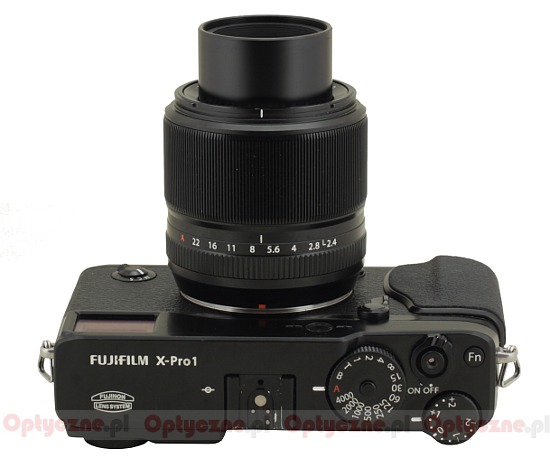 |
The last element of the proper lens body is a bayonet mount for a hood. It also surrounds a fragment of the casing on which there is the name and parameters of the lens. A tube extends from it with the front element system. The tube has a non-rotating filter thread on its edge, with a diameter of 39 mm. The front element is 23 mm in diameter and it hides inside the casing about 2 cm deep. With 1:2 magnification factor the edge of the lens’s tube is situated in the distance of about 15 cm from the photographed object.
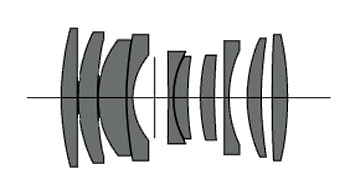
When it comes to the optical construction we deal here with 10 elements positioned in 8 groups. The producer boasts of using one aspherical element and one element made of low-dispersion ED glass. Inside you can also find an aperture with nine diaphragm blades; it can be closed down to f/22.0.
The buyer gets both caps, a hood and a case in the box. It is nice that the producer didn’t economize on those useful accessories. Currently such a practice is less and less common – even lenses much more expensive than the Fujinon can be sold with the caps only.
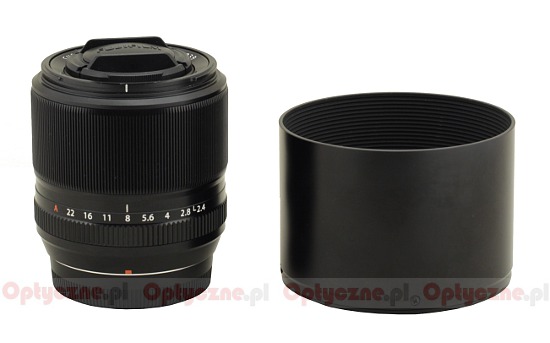 |






